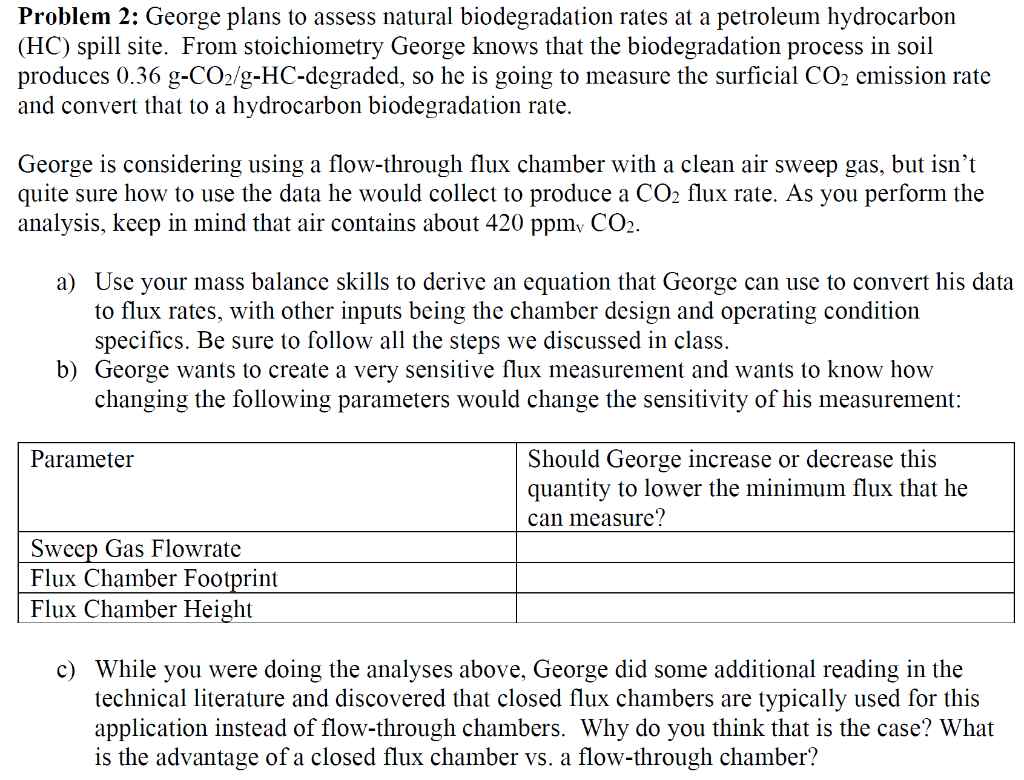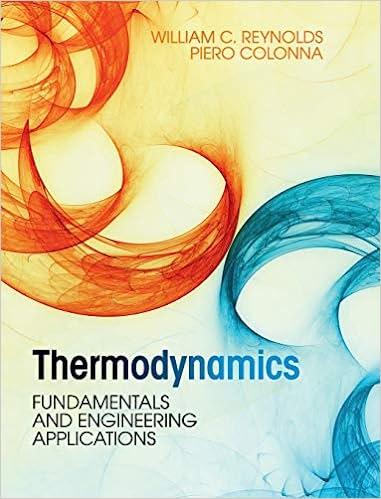
Problem 2: George plans to assess natural biodegradation rates at a petroleum hydrocarbon (HC) spill site. From stoichiometry George knows that the biodegradation process in soil produces 0.36 g-CO2/g-HC-degraded, so he is going to measure the surficial CO2 emission rate and convert that to a hydrocarbon biodegradation rate. George is considering using a flow-through flux chamber with a clean air sweep gas, but isn't quite sure how to use the data he would collect to produce a CO2 flux rate. As you perform the analysis, keep in mind that air contains about 420 ppm, CO2. a) Use your mass balance skills to derive an equation that George can use to convert his data to flux rates, with other inputs being the chamber design and operating condition specifics. Be sure to follow all the steps we discussed in class. b) George wants to create a very sensitive flux measurement and wants to know how changing the following parameters would change the sensitivity of his measurement: Parameter Should George increase or decrease this quantity to lower the minimum flux that he can measure? Sweep Gas Flowrate Flux Chamber Footprint Flux Chamber Height c) While you were doing the analyses above, George did some additional reading in the technical literature and discovered that closed flux chambers are typically used for this application instead of flow-through chambers. Why do you think that is the case? What is the advantage of a closed flux chamber vs. a flow-through chamber? Problem 2: George plans to assess natural biodegradation rates at a petroleum hydrocarbon (HC) spill site. From stoichiometry George knows that the biodegradation process in soil produces 0.36 g-CO2/g-HC-degraded, so he is going to measure the surficial CO2 emission rate and convert that to a hydrocarbon biodegradation rate. George is considering using a flow-through flux chamber with a clean air sweep gas, but isn't quite sure how to use the data he would collect to produce a CO2 flux rate. As you perform the analysis, keep in mind that air contains about 420 ppm, CO2. a) Use your mass balance skills to derive an equation that George can use to convert his data to flux rates, with other inputs being the chamber design and operating condition specifics. Be sure to follow all the steps we discussed in class. b) George wants to create a very sensitive flux measurement and wants to know how changing the following parameters would change the sensitivity of his measurement: Parameter Should George increase or decrease this quantity to lower the minimum flux that he can measure? Sweep Gas Flowrate Flux Chamber Footprint Flux Chamber Height c) While you were doing the analyses above, George did some additional reading in the technical literature and discovered that closed flux chambers are typically used for this application instead of flow-through chambers. Why do you think that is the case? What is the advantage of a closed flux chamber vs. a flow-through chamber







